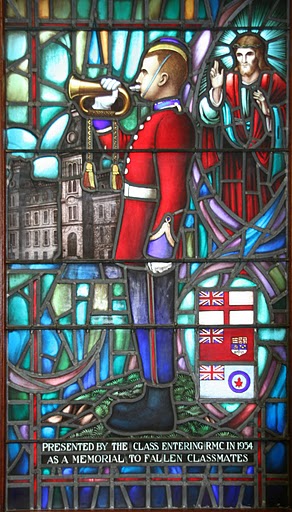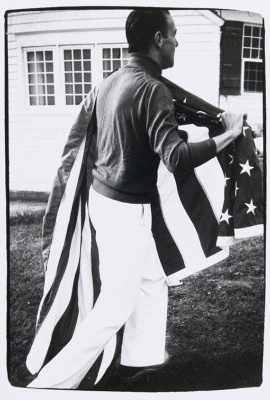 Portrait of Isaac Mizrahi by Annie Leibovitz. Published in Vogue, December 1995
Portrait of Isaac Mizrahi by Annie Leibovitz. Published in Vogue, December 1995
Isaac Mizrahi was born in Brooklyn, New York, in 1961, of Syrian Jewish heritage. He is the cousin of rock guitarist Sylvain Sylvain, former player in the New York Dolls.
When Isaac was eight, his family moved to the middle-class Midwood section of Brooklyn. He contracted spinal meningitis during this time and his confinement was spent eating junk food and viewing television, especially old movies. The 1961 remake of Back Street, about an affair between a fashion designer and a married man, was a pivotal event in Mizrahi’s development. The glamour of the fashion industry depicted in the movie became an inspiration to him to design clothes.
Around 1971, young Isaac steals money from his mother to buy fabric and trimmings. At eleven, he saves up babysitting money and purchases his first sewing machine—a secondhand Singer from the 1920s—and begins stitching clothes for his puppets. He later says, “I felt like a total outcast. I used to sit and make these puppets and watch a lot of television and a lot of movies on television. My mother was really worried about me. Everybody was worried about me.”
After struggling to fit in at Yeshiva of Flatbush, an Orthodox Jewish private school (where he is caught sketching fashions in his prayer books and doing rabbi impersonations), Isaac transfers to New York’s High School of Performing Arts. “It was a setting free,” he will later say. Dabbles in acting. October: At Isaac’s bar mitzvah—to which he wears “sky-blue shantung” —his father presents him with a pair of scissors engraved with his name.At 13, Isaac was designing clothes for himself, his mother, and a close friend of his mother, Sarah Haddad.
Isaac makes an appearance as Touchstone in the singing-and-dancing-teens film Fame (Alan Parker, 1980), based on the competitive atmosphere at his performing-arts alma mater.
His earliest design influences stemmed from his his mother’s all-American wardrobe, which included clothing from Halston, Geoffrey Beene, Claire McCardell and Norman Norell.
1982 Graduated from Parsons School of Design, New York. Among his fellow students is Marc Jacobs, two years his junior. “At Parsons, everyone thought he was incredibly talented,” Jacobs later recalls.
Worked for Perry Ellis, and said he was a major influence who taught him how to cut a dress, and many lessons in life. After this, he worked with Jeff Banks and Calvin Klein.
After leaving Calvin Klein, in June 1987 he and Sarah Haddad-Cheney pooled $50,000 each and opened Mizrahi’s own womenswear company. They occupied a loft on Greene Street in SoHo. Seven stores bought the first season’s collection. By the first collection show in April 1988 Haddad-Cheney had secured additional financing from the owners of Gitano Jeans company. In 1990 the company’s workrooms and showroom moved to an expanded space on Wooster Street. Mizrahi’s menswear collection premiered in April 1990.
1990 Isaac Mizrahi is presented with the CFDA designer of the year award for his women’s wear collection.
The year 1997 proved to be a milestone in Mizrahi’s career. He announced an unprecedented deal with three major Asian markets in Japan, Singapore, and Korea which included freestanding stores, in-store shops, wholesale distribution, manufacturing, and sublicenses in Japan and shops and distribution in Southeast Asia, an online ABC source reported. The deal was estimated to generate at least $150 million in retail sales by the year 2000.
Mizrahi has made appearances in numerous television shows and movies since the 1990s. In 1995, a movie was released about the development of his Fall 1994 collection called Unzipped made by his freind Douglas Keeve. In fall 2005 the Isaac show debuted on Style Network. He previously had a show on the Oxygen network. His new less-expensive line ISAAC, opens in 34 locations around the USA. Each boutique will show his new logo, a Silver Star.
He often appears on many of E!’s programs and has become well-known for being flamboyant and considered by some to be rude. He also appeared as himself in the episode “Plus One is the Loneliest Number” of the fifth season of Sex and the City.
He also guest starred on the American dramedy series Ugly Betty (based on Fernando Gaitán‘s Colombian telenovela soap opera Yo soy Betty, la fea), in which he played a reporter for the cable channel Fashion TV in the episode “Lose the Boss“.
Mizrahi also appeared as himself in The Apprentice season 1 (episode 6) as one of the celebrities auction for The Elizabeth Glaser Pediatric AIDS Foundation.
He made a series of comic books called Sandee, the Adventures of a Supermodel, published by Simon & Schuster.
Mizrahi is currently the spokesperson for Klein-Becker’s StriVectin anti-wrinkle cream.
He is developing “The Collection,” a one-hour scripted project that draws on the experiences of the designer for The CW Network.
Known for his magnetic personality and witty style, Mizrahi has won four Council of Fashion Designers of America (CFDA) awards. He is famous for his use of colour and the clean flattering lines of his designs. Chanel, who was financing him, pulled the plug and Isaac had closed his own fashion house in 1998. He started his own TV show interviewing celebrities.
However in February 2003, Mizrahi entered into a new partnership with New York based Hip retailer TARGET. Isaac created an exclusive collection of classically designed fashion sportswear and accessories for style conscious women. The collections are named “Isaac Mizrahi for Target” and he unveiled his debut collection in April 2003 in Minneapolis at the Walker Arts Center. Target is putting the designer back on the fashion map in a major mass-market way.
When he was interviewed, Isaac said he was very happy working with Target. Certain aspects of the couture scene and the constant rush to try and make money, just made him unhappy. Now he is making clothes for ordinary Americans at reasonable prices, and they are “racy, fun and crazy” and very popular.
But Isaac’s heart has always been with fashion shows, and in June 2004 he put on his first show in six years, and it was really successful. The show celebrates Bergdorf Goodman’s decision to devote space in its American couture collections for Mizrahi’s label.
 China Machado, original photographs from cover shoot for Harper’s Bazaar. Photos by Bill King
China Machado, original photographs from cover shoot for Harper’s Bazaar. Photos by Bill King Harper’s Bazaar cover, April 1971 issue
Harper’s Bazaar cover, April 1971 issue Tie-dyed suede shirt by Halston, 1971
Tie-dyed suede shirt by Halston, 1971


























































































































 Editorial feature in Vogue. June 1972. Photo: Berry Berenson
Editorial feature in Vogue. June 1972. Photo: Berry Berenson Model Karen Bjorson. Fall 1972 collection. June 29, 1972. Photo: Berry Berenson
Model Karen Bjorson. Fall 1972 collection. June 29, 1972. Photo: Berry Berenson Black silk Mao jacket. Original photograph from editorial feature in LIFE magazine. December 10, 1971. Photo: Berry Berenson
Black silk Mao jacket. Original photograph from editorial feature in LIFE magazine. December 10, 1971. Photo: Berry Berenson
 Liza Minnelli in fron of Halston Ltd., 33 East 68th street, New York 1972. Photo: Berry Berenson
Liza Minnelli in fron of Halston Ltd., 33 East 68th street, New York 1972. Photo: Berry Berenson

